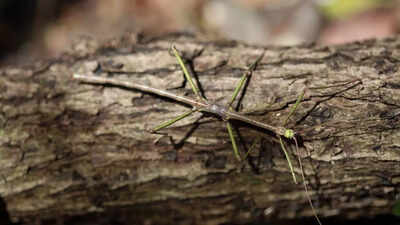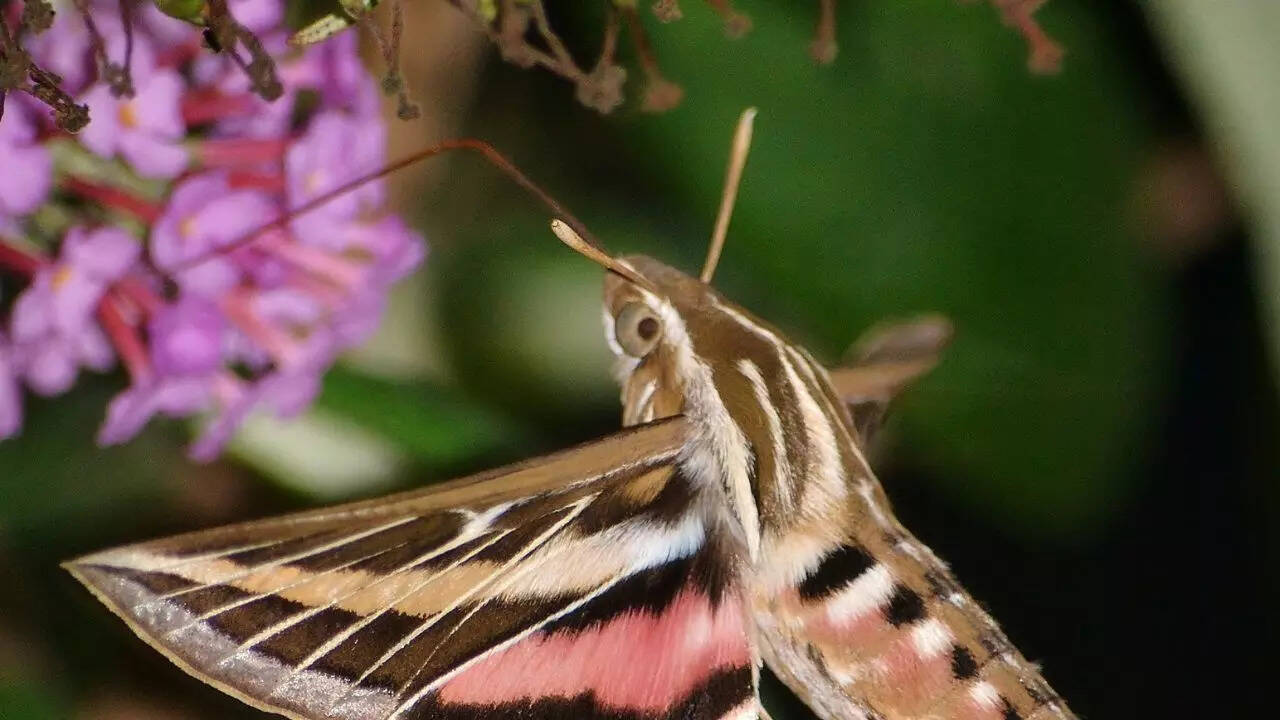ARTICLE AD BOX

Insects are among nature’s most skilled masters of disguise, using camouflage to survive in a world full of predators and prey. From blending into twigs and leaves to mimicking flowers or even other animals, these tiny creatures demonstrate remarkable creativity and adaptability.
Camouflage not only helps them avoid being eaten but also aids predators in sneaking up on their targets. Some insects rely on shape and colour, while others combine behavioural tricks to enhance their disguise. In this article, we explore five fascinating insects—the stick insect, leaf beetle, bee-like robber fly, praying mantis, and hummingbird moth—that have perfected the art of concealment.
5 insects that are masters at hiding using camouflage
Stick Insects

Stick insects, also called walking sticks, are some of the most iconic masters of camouflage.
Belonging to the order Phasmodea, they are found across almost every continent, with more than 3,000 species. Their main survival strategy is mimicry—blending seamlessly with twigs, sticks, and leaves in wooded areas. Sizes vary from just a few centimetres to nearly two feet. This natural disguise helps them avoid predators, and their harmless nature makes them popular as pets.
However, in non-native environments, large populations can defoliate plants and trees, which is why some countries regulate their transport and keeping.
Leaf Beetles

Leaf beetles show a remarkable form of camouflage. They often use the leaves they feed on as natural shields, blending into their surroundings while remaining active. By carefully positioning themselves on foliage, they become difficult for predators to spot. Unlike insects that simply mimic leaves in appearance, leaf beetles take advantage of their environment to stay hidden. This clever adaptation demonstrates how insects can use both their appearance and behaviour to improve their chances of survival, even in busy or predator-rich habitats.
Bee-Like Robber Flies

Robber flies, sometimes called assassin flies, are agile predators known for catching prey much larger than themselves. With thousands of species worldwide, some have developed a striking form of mimicry, resembling bees or wasps. This disguise helps them hunt safely near hives and deters potential predators by giving the impression that they are dangerous insects. Their camouflage serves both defensive and offensive purposes, showing how insects can use visual tricks not only to hide but to gain an advantage in hunting and survival.
Praying Mantis

Praying mantises are masters of concealment, with over 2,000 species worldwide. They can blend into leaves, flowers, and even dead foliage, making them almost invisible to both predators and prey. Flower mantises, in particular, mimic orchids and other blooms, swaying gently to enhance the effect and lure insects for capture. Some mantises even take camouflage to the extreme by imitating colours, shapes, or movements of other insects, demonstrating a combination of physical and behavioural adaptation that makes them among the most sophisticated disguisers in the insect world.
Hummingbird Moths

Hummingbird moths excel at imitating birds rather than plants or insects. Their hovering flight and feeding patterns closely resemble those of hummingbirds, allowing them to feed on nectar while avoiding predators. Many moth species also mimic spiders, frogs, wasps, or even owls, showing the incredible versatility of camouflage. Beyond hiding, hummingbird moths play a vital role as pollinators, benefiting gardens and ecosystems.
By copying animals from entirely different groups, these moths illustrate that survival can depend on more than just blending in—it can require fully adopting another species’ appearance and behaviour.Also Read: 5 things to clean in your office every day to prevent germs and illness



.png)
.png)
.png)
















 1 hour ago
6
1 hour ago
6









 English (US) ·
English (US) ·